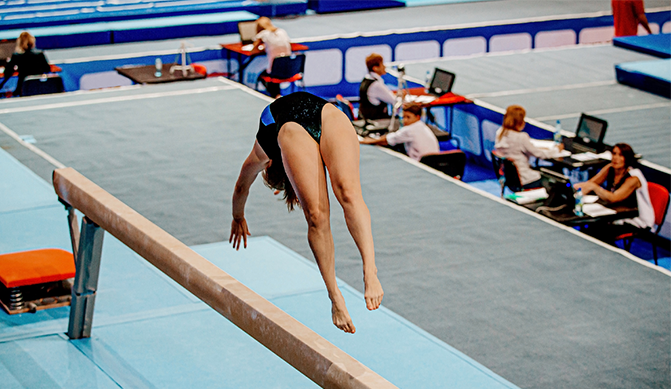Once every four years, the world gets a special opportunity to watch the world’s most talented gymnasts compete against each other in hopes of earning the title of world champion.
U.S. Olympic gymnastic trials started on June 24th, 2021, for both men’s and women’s gymnastics teams, giving viewers a sneak peek at what kind of punch U.S. athletes will be packing when they compete in Tokyo on July 23rd.
From what we’ve seen so far, it’s going to be quite the show.
U.S. Olympic Team Watch: Who Will Make The Cut?
Only the top four Olympic trial athletes will advance to the Tokyo games, down from five athletes in past Olympics. Among the chosen four women’s gymnastics, some key players to watch out for this summer are Simone Biles, Suni Lee, Jordan Chiles, and Jade Carey.
For the men’s team, don’t be surprised to see six-time all-around champion Sam Mikulak standing aside Yul Moldauer, Brody Malone, Shane Wiskus, or Akash Modi. Of course, Brandon Briones, Allan Bower, Stephen Nedoroscik, Alec Yoder, and Donnell Whittenburg are ready to give it their all, and as any athlete will tell you, anything is possible.
What Olympic Events Will Be Judged?
Olympic gymnastics are broken down into artistic, rhythmic, and trampoline gymnastics.
Artistic Gymnastics
Artistic gymnastics events have been a staple of the Olympic games since 1894. Artistic gymnastic events differ between male and female participants, with the women’s events including beam, vault, uneven bars, and floor exercises, and the men’s including vault, pommel horse, horizontal bar, parallel bars, and floor exercises. Only two gymnasts per country may enter the all-around event.
Rhythmic Gymnastics
A female-only event, rhythmic gymnastics made its big Olympic debut at the 1984 games. This event showcases a gymnast’s skill, flexibility, and musicality on the floor and is broken up into two events, all-around and individual.
For the individual rhythmic event, each gymnast will perform a choreographed routine in which they must keep the chosen prop constantly moving. These props include a ball, hoop, clubs, and ribbon.
The all-around rhythmic gymnastics event requires all team members to complete two-floor performances with two different sets of props, using the same props in the first performance and a mix of props in the second.
To score big in the all-around group event, gymnasts must bring their absolute best gymnastics skills, throws, timing, and coordination to the floor for a performance more captivating than their competitors.
Trampoline Gymnastics
The third and final event Olympic gymnasts are judged on is the trampoline. Making its debut in the 2000 Olympics, trampolining is an individual competition for male and female athletes, scored based on difficulty and execution of the aerial stunts performed. Trampoline gymnasts perform two routines in which they must jump 8 meters, flip, and spin through ten consecutive acrobatic elements.
Bring the 2021 Tokyo Olympics Home with We Sell Mats™
Tune into the Olympics, beginning July 23rd-August 8th to see who among the top competitors will get their turn in the winner’s circle. While you watch, give your kids the chance to create their own gymnastics fun with fun and affordable gymnastics mats, including balance beams, crash pads, and tumbling mats!




